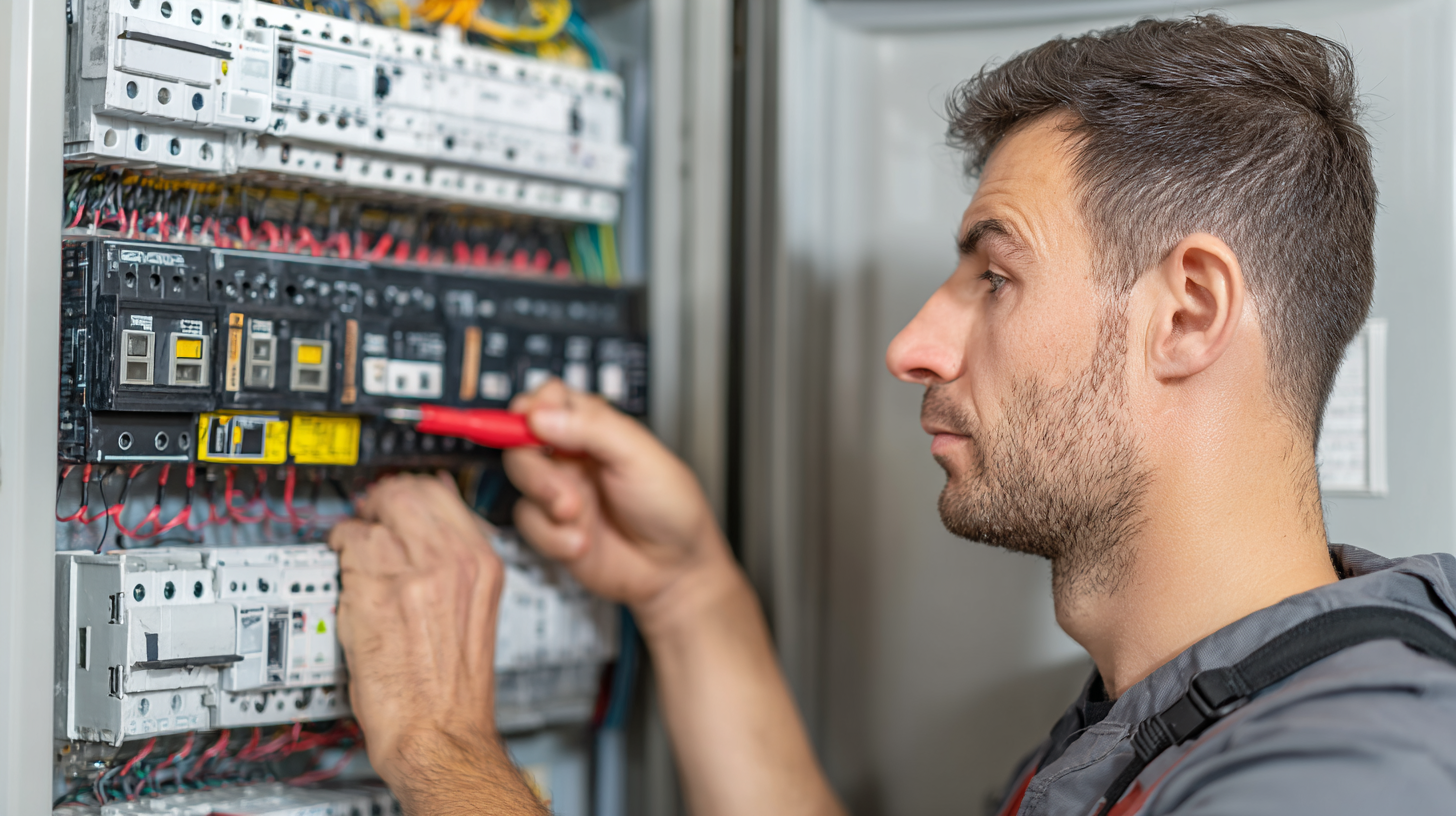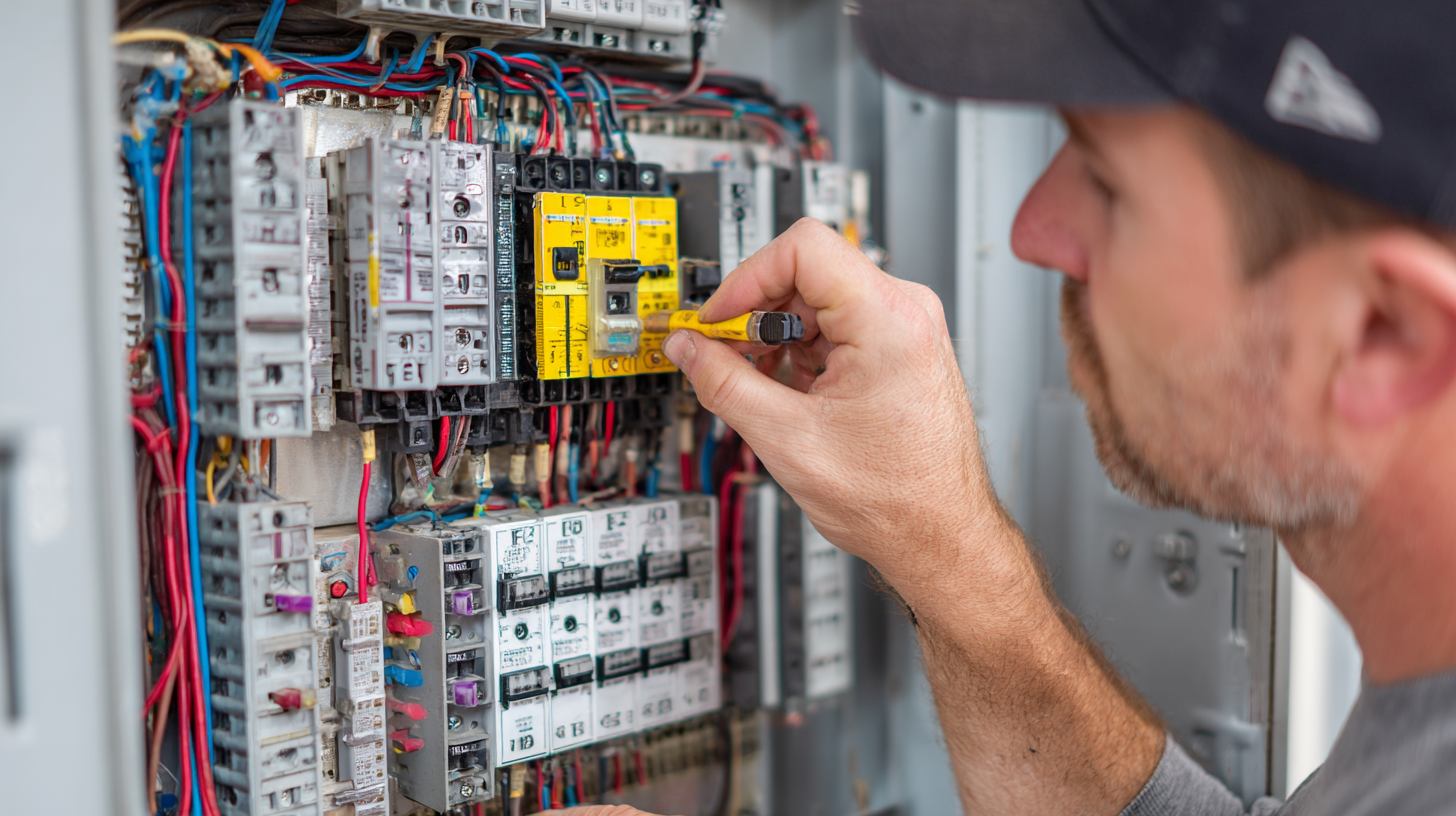- Home
- News
Understanding How to Check Circuit Breakers: A Step-by-Step Guide for Homeowners
As homeowners, understanding how to check circuit breakers is essential for maintaining a safe and functional electrical system. According to the U.S. Consumer Product Safety Commission, electrical failures are responsible for approximately 50,000 house fires each year, emphasizing the importance of regular inspections and maintenance of electrical systems. Furthermore, the National Fire Protection Association reports that improperly functioning circuit breakers contribute significantly to these incidents. With the increasing number of devices we rely on, the demand for reliable electricity is at an all-time high, making knowledge about how to check circuit breakers indispensable. This step-by-step guide will equip homeowners with the necessary skills to identify potential issues and ensure their circuit breakers operate effectively, ultimately promoting safety and preventing costly repairs.

Importance of Regular Circuit Breaker Checks for Home Safety
Regular circuit breaker checks are vital for maintaining home safety and preventing electrical hazards. According to the National Fire Protection Association (NFPA), electrical failures or malfunctions contribute to approximately 13% of home structure fires. Regular inspection of circuit breakers not only helps identify potential issues but also ensures that they are functioning correctly to protect your home from overloads and shorts, which can lead to severe consequences.
In addition, the U.S. Consumer Product Safety Commission (CPSC) emphasizes that outdated or faulty circuit breakers can significantly increase the risk of fire and electrical injuries. Homeowners should be aware that circuit breakers have a lifespan of about 30 to 40 years, and regular checks can help identify wear and tear before it leads to failures. Conducting these assessments quarterly can minimize risks and ensure that your electrical systems remain reliable. By prioritizing circuit breaker maintenance, you are not only ensuring compliance with safety standards but also safeguarding your family and property from preventable electrical disasters.
Common Signs of Circuit Breaker Issues and Their Implications
Identifying common signs of circuit breaker issues is crucial for homeowners, as it can prevent larger electrical problems in the future. One of the primary indicators that a circuit breaker might be malfunctioning is frequent tripping. According to industry reports, a circuit breaker that trips more than once a month may be signaling an underlying issue, such as a short circuit or overloaded circuit. Additionally, if a breaker feels warm to the touch or emits unusual smells, it could indicate overheating, which poses serious fire hazards.
Another sign that homeowners should watch for is flickering or dimming lights. Research suggests that this can stem from inadequate wiring or connections, which could lead to further electrical complications if not addressed promptly. Regular inspections of your home's electrical systems can help to identify these issues early on. With the growing concerns around home safety, a proactive approach to monitoring and maintaining circuit breakers is essential to ensuring a safe living environment. Prioritizing these checks not only aids in protecting your home but also enhances the reliability of your electrical systems.

Step-by-Step Instructions for Inspecting Circuit Breakers Safely
When it comes to maintaining a safe home environment, knowing how to check your circuit breakers is essential. The U.S. Fire Administration reports that electrical malfunctions, often related to circuit breakers, account for an estimated 47,000 home fires annually, resulting in significant property damage and even loss of life. Thus, homeowners should familiarize themselves with the inspection process to ensure their electrical systems avoid unsafe conditions.
To safely inspect your circuit breakers, start by turning off all electronics in the vicinity. Open the circuit breaker panel door and visually inspect each breaker for signs of wear, such as discoloration or a burnt smell. According to the National Fire Protection Association, nearly 20% of home electrical fires arise from faulty circuit breakers. Ensure that any tripped breakers are reset properly. If a breaker continues to trip, it may indicate an overload or a short circuit, and it's crucial to contact a qualified electrician for further evaluation. This proactive approach not only enhances safety but can also prolong the lifespan of your electrical system.
Understanding How to Check Circuit Breakers: A Step-by-Step Guide for Homeowners
| Step | Action | Tools Needed | Safety Tips |
|---|---|---|---|
| 1 | Turn off the main power supply | None | Always ensure the power is off to prevent shock. |
| 2 | Locate the circuit breaker panel | None | Ensure the area around the panel is clear and dry. |
| 3 | Inspect each circuit breaker | Flashlight | Look for signs of damage like burns or odors. |
| 4 | Reset any tripped breakers | None | Do not overload the circuit when resetting. |
| 5 | Close the panel and turn the power back on | None | Ensure your hands are dry and clear of circuits. |
Understanding Circuit Breaker Ratings and Their Impact on Home Power Supply
Circuit breaker ratings are essential to understanding how to safeguard your home’s electrical system. These ratings, expressed in amperes (amps), indicate the maximum amount of current the breaker can handle before tripping to prevent overheating and possible electrical fires. For homeowners, it's crucial to ensure that their circuit breakers correspond to the electrical demands of their appliances and fixtures. Overloading a circuit can lead to frequent breaker trips, whereas underutilizing a breaker may not utilize the home's electrical capacity effectively.
The impact of circuit breaker ratings on home power supply cannot be overstated. Using a breaker with an inadequate rating for high-demand appliances, such as air conditioners or electric ovens, can result in tripping and downtime. Conversely, utilizing a breaker with a higher rating than necessary can pose safety risks, as it may fail to disconnect during a fault condition. Therefore, homeowners should familiarize themselves with the ratings of their circuit breakers and the appliances connected to them, ensuring a harmonious balance between safety and efficiency in their home’s electrical system.
Understanding Circuit Breaker Ratings Impact on Home Power Supply
Industry Standards for Residential Electrical Systems and Maintenance Best Practices
When it comes to maintaining residential electrical systems, adhering to industry standards is crucial for safety and efficiency. These standards, often set by organizations like the National Electrical Code (NEC), provide guidelines for circuit breaker installations and their subsequent checks. Homeowners should familiarize themselves with these regulations, as they offer a framework to ensure that electrical systems are safe, reliable, and compliant with local codes. For instance, knowing the correct amperage rating for breakers is essential to prevent overheating and potential electrical fires.

In addition to understanding these standards, homeowners can benefit from best practices for maintenance. Regularly testing circuit breakers by flipping them on and off helps identify any issues early on. Furthermore, keeping a detailed record of inspections and maintenance can enhance the longevity of the electrical system. It's also advisable to engage a licensed electrician for any repairs or replacements, ensuring that all work is performed according to industry regulations. By incorporating these practices, homeowners can create a safer living environment while ensuring that their electrical systems function efficiently.
Related Posts
-

Ultimate Guide to Evaluating Circuit Breaker Performance for Optimal Procurement Decisions
-

Electrical Check Standards: Unveiling Global Compliance Challenges in Manufacturing
-

Ensuring Safety and Compliance: The Critical Importance of Gas and Electricity Checks in Global Supply Chains
-

How to Conduct a Home Electrical Check for Safety and Efficiency
-

Understanding Global Standards: The Essential Guide to Best Testing Electrical Safety Practices in Manufacturing
-

10 Essential Gas Safety Check Stats You Must Know
